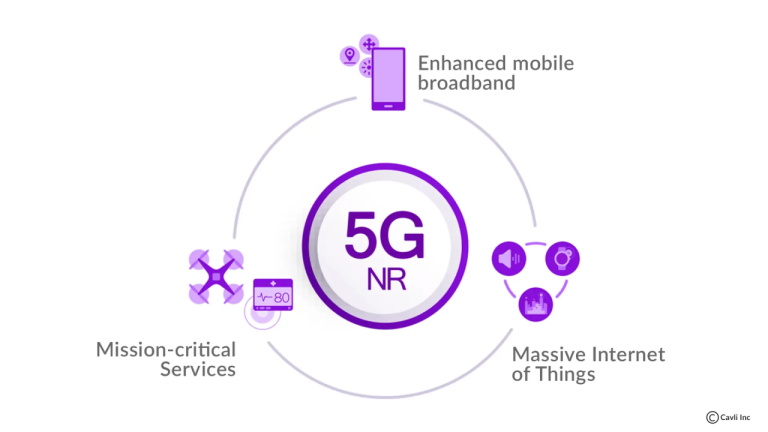How 5G Powers IoT Growth & Smart City Advancements
telcomatraining.com – The rapid advancement of technology is transforming urban landscapes worldwide, with the Internet of Things (IoT) playing a pivotal role in shaping smart cities. The deployment of 5G networks has significantly accelerated IoT growth, providing high-speed, low-latency, and reliable connectivity. This article explores how 5G powers IoT expansion and facilitates smart city innovations, making urban environments more efficient, sustainable, and interconnected.
The Role of 5G in IoT Growth
IoT relies on seamless connectivity to enable smart devices, sensors, and systems to communicate and function optimally. 5G enhances IoT capabilities in several key ways:
1. Ultra-Fast Connectivity
5G networks deliver speeds up to 100 times faster than 4G LTE, allowing IoT devices to process and transmit data in real time. This rapid data exchange is crucial for applications like autonomous vehicles, remote healthcare, and smart infrastructure management.
2. Low Latency for Real-Time Applications
One of the biggest advantages of 5G is its ultra-low latency, reducing data transmission delays to as little as one millisecond. This is vital for time-sensitive applications such as traffic management, emergency response systems, and industrial automation, where even a slight delay can have significant consequences.
3. Massive IoT Connectivity
Unlike previous network generations, 5G can support up to one million devices per square kilometer. This scalability enables cities to deploy a vast array of IoT sensors and devices for smart grids, environmental monitoring, and intelligent transportation systems.
4. Enhanced Reliability and Security
5G networks are designed with robust security protocols to prevent cyber threats and unauthorized access. With built-in encryption and authentication measures, sensitive data from smart city applications remain protected, fostering public trust and widespread adoption.
How 5G Transforms Smart Cities
Smart cities leverage IoT to improve urban living, enhance sustainability, and streamline city services. With the integration of 5G, smart city advancements are accelerating across various sectors.
1. Smart Transportation Systems
5G-powered IoT enables real-time vehicle-to-vehicle (V2V) and vehicle-to-infrastructure (V2I) communication, enhancing traffic flow and reducing congestion. Intelligent traffic management systems use AI-driven analytics to optimize signal timings, reduce emissions, and improve road safety.
2. Efficient Energy Management
Smart grids powered by 5G allow cities to monitor and optimize energy distribution efficiently. IoT-connected sensors track energy consumption, detect faults, and support renewable energy integration, leading to reduced wastage and lower utility costs.
3. Advanced Public Safety & Emergency Response
5G enhances emergency response times by enabling real-time video surveillance, AI-based crime detection, and automated alert systems. Connected drones and robotic assistants can aid in disaster management, ensuring quicker and more effective responses to emergencies.
4. Smart Healthcare & Telemedicine
With the support of 5G, remote healthcare services become more effective, allowing doctors to monitor patients in real time through wearable IoT devices. High-speed networks enable seamless telemedicine consultations, remote surgeries, and AI-driven diagnostics, improving healthcare accessibility and efficiency.
5. Sustainable Urban Development
Smart cities prioritize sustainability by leveraging IoT-powered environmental monitoring systems. Air quality sensors, waste management automation, and smart water systems help reduce pollution, conserve resources, and create eco-friendly urban spaces.
Challenges and Future Prospects
Despite its immense potential, the implementation of 5G in IoT and smart cities faces challenges such as high infrastructure costs, cybersecurity risks, and regulatory complexities. However, as 5G adoption increases and technologies mature, these challenges will gradually be addressed. Future advancements, including 6G networks and AI-driven automation, will further enhance smart city development and IoT integration.
Conclusion
The convergence of 5G and IoT is revolutionizing smart cities, making urban environments more efficient, sustainable, and interconnected. With ultra-fast speeds, low latency, and massive device connectivity, 5G empowers a new era of innovation across transportation, healthcare, energy management, and public safety. As technology continues to evolve, the vision of fully connected, intelligent cities is becoming a reality, paving the way for a smarter and more sustainable future.







